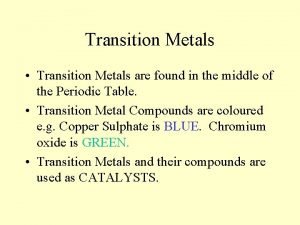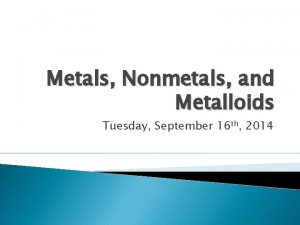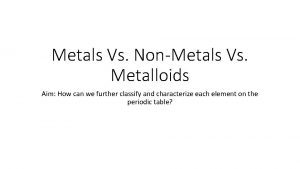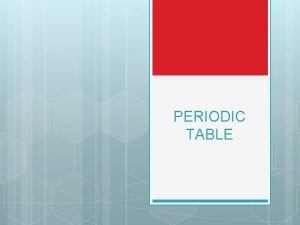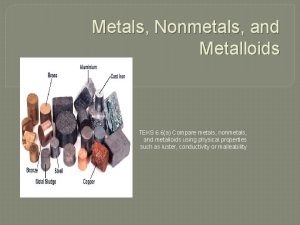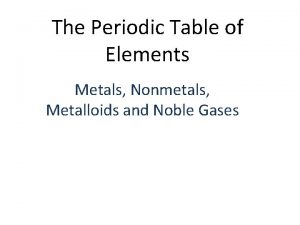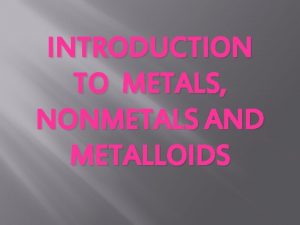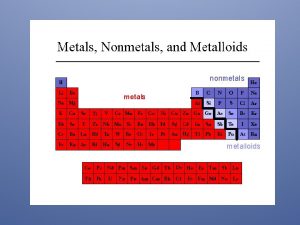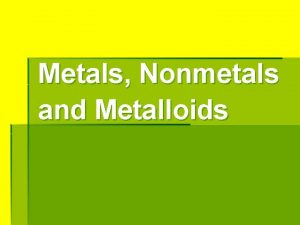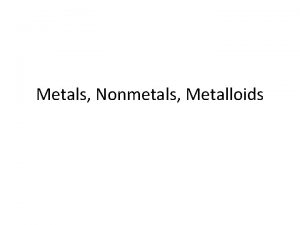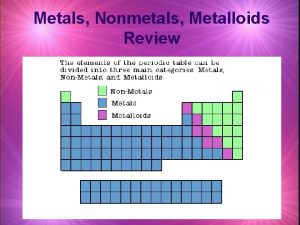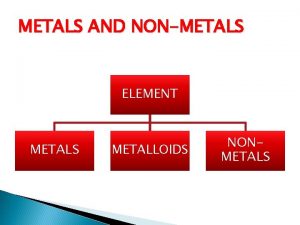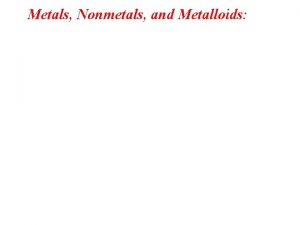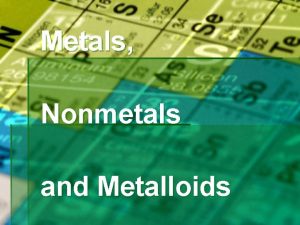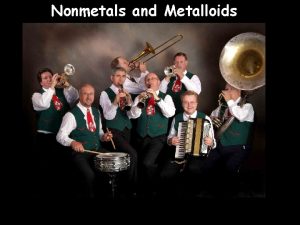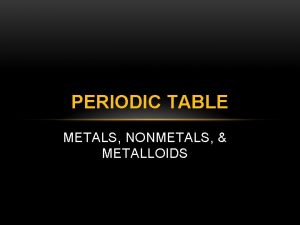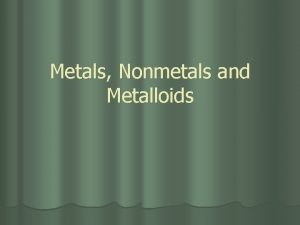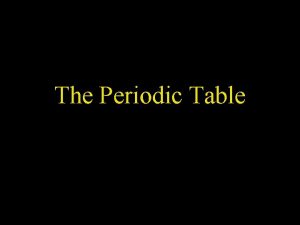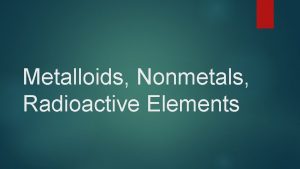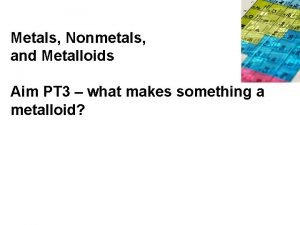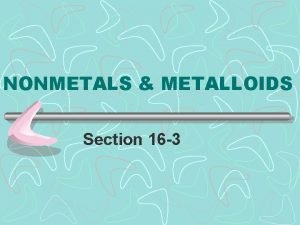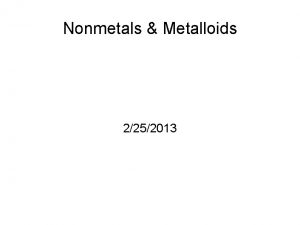Metals Vs NonMetals Vs Metalloids Aim How can












- Slides: 12

Metals Vs. Non-Metals Vs. Metalloids Aim: How can we further classify and characterize each element on the periodic table?


Common Characteristics of Metals • Metals are solid at room temperature, except for mercury (which is a liquid) • Most metals have greater density’s then water except for group 1 metals • Densities are found on table S of your periodic table • Metals tend to lose electrons more easily and form smaller, positive radii

Metals Con’t • Metals are malleable (bendable) • Metals are ductile (can be drawn or pulled into a wire) • Metals have a luster (shine)

Metals con’t • Metals are good conductors of heat and electricity • This means that electrons/charged particles are moving around • Let’s see how this works Electron conductivity Tester

Metals: Electronegativity and Ionization Energy • Metals have low ionization energies and electronegativities • Ionization energy is the amount of energy needed to remove a valance electron. Because metals lose electrons, it does not take much energy to remove a valance electron. • Electronegativity is the level of attraction of a nucleus for a bonded electron. Because metals are losing electrons, they have a low electronegativity

Characteristics of Non-Metals • Most are gases or solids, except for bromine (liquid) • They tend to gain electrons and increase their atomic radii

Non-Metals Con’t • They are not malleable (bendable) • They tend to be brittle in the solid phase • Solid non-metals lack luster; their surface is dull

Non-Metals Con’t • Non-metals are poor conductors of heat and electricity • This means that electrons/charged particles are NOT moving around • Again, let’s see how this works Electron conductivity Tester

Non-Metals: Electronegativity and Ionization Energy • They have high electronegativity and ionization energies • Ionization energy is the amount of energy needed to remove a valance electron. Because non-metals gain electrons, it takes a lot of energy to remove a valance electron. • Electronegativity is the level of attraction of a nucleus for a bonded electron. Because non-metals gain electrons, they have a high electronegativity

Metalloids • Metalloids (B, Si, Ge, As, Sb and Te) sometimes called semimetals, are sandwiched between metals and non-metals. • Aluminum and Polonium are NOT METALLOIDS • They represent elements that contain both characteristics of metals and non -metals. They may not have all the characteristic of a metal or a non-metal

Some Questions: • Each lab table/ row will get four items. It is your job to determine whether these items are metals or non-metals. Use the notes we took to support your reasoning. • Once you finish, look through your things. Pick one metal and one non-metal. Use the notes we took to support your reasoning.
 Nonmetals on the periodic table
Nonmetals on the periodic table Poem about metals nonmetals and metalloids
Poem about metals nonmetals and metalloids Metals nonmetals and metalloids answer key
Metals nonmetals and metalloids answer key Metals vs nonmetals vs metalloids
Metals vs nonmetals vs metalloids Labeled periodic table
Labeled periodic table Compare metals nonmetals and metalloids
Compare metals nonmetals and metalloids Periodic table metals nonmetals metalloids noble gases
Periodic table metals nonmetals metalloids noble gases Is chalk a metal or nonmetal
Is chalk a metal or nonmetal Periodic table metals nonmetals and metalloids
Periodic table metals nonmetals and metalloids Differentiate metals nonmetals and metalloids
Differentiate metals nonmetals and metalloids Metalloids vs metals
Metalloids vs metals Periodic table divided in metals nonmetals and metalloids
Periodic table divided in metals nonmetals and metalloids Nonmetals vs metals periodic table
Nonmetals vs metals periodic table

